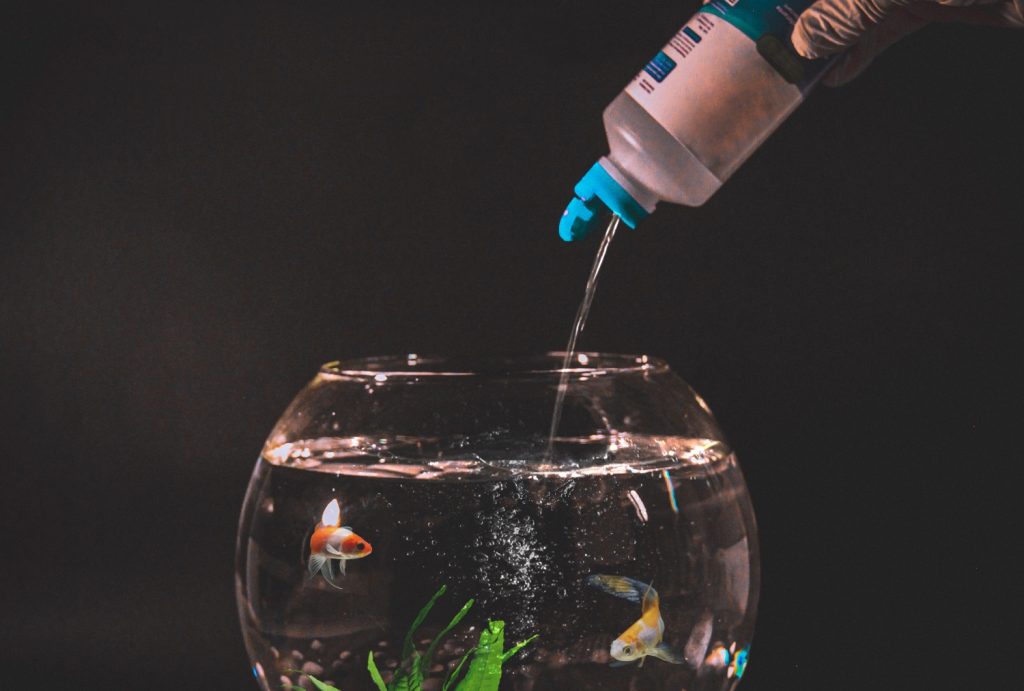Aquarium water conditioner plays a crucial role in maintaining a safe and healthy aquatic environment. However, not all water conditioners offer the same level of quality and value. In this comprehensive guide, we will provide you with essential information to help you choose the best aquarium water conditioner for your specific needs.
A Quick Overview: The Top Choice for Best Aquarium Water Conditioner
After extensive research and evaluation of various options, Seachem Prime has emerged as the best aquarium water conditioner on the market.
Understanding Tap Water Conditioner
Tap water conditioner is a specially formulated blend of chemicals designed to render tap water safe for aquarium use. It effectively neutralizes harmful substances and prepares the water for aquatic life. In addition, certain conditioners can be used in emergency situations to detoxify water compounds while you address the underlying issue.
The Importance of Water Conditioner
The primary reason for using a water conditioner is to ensure that water from a municipal water supplier is safe for your aquarium. Municipal water, supplied by cities, counties, or water companies, is treated with chemicals such as chlorine (Cl) and chloramine (NH2Cl) to eliminate bacteria and viruses. While these chemicals are beneficial for human consumption, they pose a significant threat to fish, aquatic reptiles, amphibians, and invertebrates.
Chlorine and chloramine directly enter the bloodstream of these animals, leading to poisoning. Exposure to chlorine or chloramine essentially bleaches the aquatic animals from the inside out, causing severe harm. Water conditioners also help detoxify compounds like ammonia, nitrite, and nitrate, making them essential in case of emergencies when water parameters are temporarily imbalanced.
Differentiating Between Chlorine and Chloramine
In the past, regular chlorine was commonly used to disinfect drinking water in municipal supplies. However, pure chlorine is volatile and easily dissipates as a gas at room temperature, meaning it can evaporate from the water it is dissolved in. If exposed to the open air, all the chlorine in the water will dissipate within a day. Consequently, when water travels from the treatment plant to its final destination, it may no longer contain any chlorine, making it susceptible to bacterial and viral contamination once again.
On the other hand, chloramine is a more stable compound formed by binding ammonia to chlorine. Unlike chlorine, chloramine does not evaporate as readily and has a longer-lasting effect. Consequently, many water suppliers are switching to chloramine due to its improved durability. While this is beneficial for preventing waterborne illnesses, it poses challenges for aquarium enthusiasts.
Unlike chlorine, chloramine cannot be eliminated by simply letting water sit out in a bucket. If your water supply contains chloramine, using a water conditioner is absolutely necessary to prevent the death of your fish and invertebrates.
Detecting Chloramine in Tap Water
There are two main methods to determine the presence of chloramine in your tap water:
- Ask Your Water Supplier: Contact your water company and inquire about the disinfectant they use for treating the water. You can also check their website for this information, which is often easily accessible.
- Test Strips: Another effective way to check for chloramine is by using test strips that measure both free and total chlorine levels. Free chlorine refers to chlorine that is not bound to anything, while total chlorine measures both bound and unbound chlorine. Regular chlorine will register on the free chlorine test strip, whereas chloramine will appear on the total chlorine section. If the total chlorine level is significantly higher than the free chlorine level, it indicates the presence of chloramine in your water supply, requiring the use of a dechlorinator.
Times When Water Conditioner May Not Be Required
There are specific situations where water conditioner usage can be skipped:
- Well Water: If your water source is a private well instead of a municipal supply, no chlorine or chloramine is added to it. In this case, water conditioner is unnecessary.
- Allowing Water to Sit: In the past, many aquarium owners used to let water sit out for 24-48 hours, allowing the chlorine to dissipate naturally. However, this method only works if your water supply uses chlorine and not chloramine. Additionally, it does not remove compounds like nitrite, nitrates, or heavy metals. For larger water volumes or time-sensitive situations, relying on this method can be impractical.
- Boiling Water: Boiling tap water for 20 minutes can remove chlorine, but it does not eliminate chloramine. Boiling large quantities of water can be time-consuming and inconvenient, making it an impractical solution for most aquarium enthusiasts.
Factors to Consider When Choosing a Water Conditioner
Before purchasing a water conditioner, consider the following factors:
- Price per Gallon: Price is an important consideration when selecting a water conditioner. Calculate the price per gallon treated by dividing the cost of the bottle by the number of gallons it can treat. By comparing the price per gallon, you can determine the best value for your money. Cheaper brands may not treat as many gallons per bottle, making them less cost-effective in the long run.
- Chloramine Removal: If your tap water contains chloramines, it is crucial to choose a water conditioner that removes both chlorine and detoxifies ammonia. Some conditioners only eliminate chlorine, leaving behind toxic ammonia, which can be detrimental to your fish.
By taking these factors into account, you can confidently select the best aquarium water conditioner that meets your specific requirements.
Our Top 5 picks
FAQ’s
When should water conditioner be added?
To ensure the well-being of your fish, it is recommended to add water conditioner whenever you introduce water into the tank. This applies whether you are performing a significant water change or simply replenishing water lost through evaporation. By using water conditioner, you can avoid subjecting your fish to harmful substances such as chlorine or chloramine found in tap water.
What is the appropriate amount of water conditioner to use?
To determine the correct dosage of water conditioner, carefully refer to the instructions provided on the bottle. For convenient measurement, tools like medicine droppers or small cups commonly used for administering liquid medications to children can be employed. These aids simplify the process of measuring and adding the appropriate amount of water conditioner to your aquarium.
How frequently should water conditioner be used in the aquarium?
Under normal circumstances, the addition of water conditioner is necessary only when introducing tap water to your aquarium. However, if you conduct water tests and discover elevated levels of substances like ammonia, nitrite, or nitrate, it becomes crucial to take immediate action. In such cases, begin with a 50% water change and then treat the tank with a water conditioner specifically designed to detoxify ammonia, nitrate, and nitrite.
Authors
-

Lawrence, the founder of Pet Ploy, established the website in mid-2023. With a lifelong love for pets, Lawrence has been surrounded by a variety of animals since his early years. From dogs and cats to guinea pigs, rabbits, fish, and more, he has experienced the joy of caring for a diverse range of pets. Drawing from his deep-rooted passion, Lawrence created Pet Ploy to share his knowledge and enthusiasm with fellow pet enthusiasts. Through the platform, he aims to provide valuable insights, tips, and resources to promote the well-being and happiness of pets everywhere.
-

Dr. Jerry Ayaebi (DVM, CEP) is a Licensed Veterinary Surgeon specializing in small animal medicine and care, with a focus on household pets, reptiles, and fishes. He has extensive experience in clinical cases, ranging from inappetence to life-threatening conditions. Currently, he is the Veterinary Manager at Ectovis. After obtaining his Veterinary Medicine degree, he furthered his education by obtaining a CEP certificate, which has provided him with additional experience in the field. University of Nigeria, Nsukka (UNN) Continuous Education Program, (Veterinary Council of Nigeria)

















6 Responses
Thanks for this, I have just ordered a bottle of Sachem prime for my new aquarium 🙂